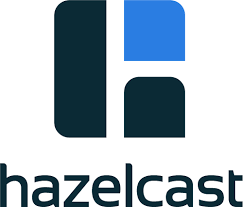These are the ten most read articles on FOSS Force for the month of April, 2016. 1. Five Linux Distros that Break the Mold by…
Posts published by “FOSS Force”
Newly discovered Windows security hole bypasses AppLocker and lets apps run without admin rights. Proof-of-concept code published.
This is one of those “look what I found while looking for something else” sort of stories. Casey Smith was trying to solve a problem and accidentally discovered a security vulnerability that affects business and server editions of Windows 7 and up.
The Mexican distro Escuelas, or ‘School,’ Linux was designed to give extended life to aging hardware in financially strapped school districts in Latin America and is based on Bodhi Linux.
On Monday, a GNU/Linux distro designed to be used in schools, Escuelas Linux, released version 4.4. Just how dedicated to education are the developers of this distro? Plenty. In case your Spanish is as rusty as ours, the Spanish name Escuelas translates to “schools” in English.
 There are more than a few things that are unusual about Escuelas Linux. For one, although ultimately derived from Ubuntu, it’s not a first generation descendant on the Ubuntu tree, but traces it’s *buntu roots by way of Bodhi Linux. The distro also uses the Moksha desktop, which Bodhi developed after becoming unhappy with the direction that Enlightenment was taking.
There are more than a few things that are unusual about Escuelas Linux. For one, although ultimately derived from Ubuntu, it’s not a first generation descendant on the Ubuntu tree, but traces it’s *buntu roots by way of Bodhi Linux. The distro also uses the Moksha desktop, which Bodhi developed after becoming unhappy with the direction that Enlightenment was taking.
The FOSS Force Poll
While it’s good to know that voters in our poll are aware that software patents remain very much a threat to free tech, the small number of people who voted might indicate a lack of awareness on the issue by newcomers to FOSS.
Another poll with results that aren’t a surprise. In this poll we wondered if you thought that software patents remain a threat to Linux and FOSS. Yup, you do. The results were pretty lopsided and not at all difficult to interpret.

The software development specialist Chariot adds open source Hazelcast 3.6 to its enterprise portfolio as the two companies announce partnership at the Philly ETE 2016 conference.
Hazelcast, a leading provider of open source operational in-memory computing, today announced a partnership with Chariot Solutions, a leading enterprise application and mobile development consulting firm, at the Philly Emerging Technologies for the Enterprise 2016 conference.
 Chariot has extensive open source experience, with many of its consultants actively contributing to key OS Java projects. Working with partners, the company advises clients on the evolving open source Java landscape, delivering tailored solutions which incorporate frameworks and tools that are commercially viable due to established community support and enhancement. Prior to signing an official partnership agreement, the two companies had worked together on several projects in telecoms and media.
Chariot has extensive open source experience, with many of its consultants actively contributing to key OS Java projects. Working with partners, the company advises clients on the evolving open source Java landscape, delivering tailored solutions which incorporate frameworks and tools that are commercially viable due to established community support and enhancement. Prior to signing an official partnership agreement, the two companies had worked together on several projects in telecoms and media.
Software patent abuse would seem to be on the decline if the amount of ink being given to the subject in the open source press is used as a metric. But as the old TV commercial used to ask: Is it live, or is it Memorex?
Five or six years ago the major GNU/Linux and FOSS news aggregators were filled with stories about software patents. These days, not so much. Does this mean that the threat posed by patents is actually less now than in 2010, or have patents simply not been getting the coverage they once did?
The FOSS Force Poll
The results of our “Apple vs. the FBI” encryption poll are in. Most of our readers agree with Apple CEO Tim Cook’s decision to stand up to the FBI.
Often when we run a poll on FOSS Force, the results only go to confirm what we already know. Our latest completed poll is an example. What we got was exactly what we expected. You don’t think the makers of encrypted devices, or encryption software, should help the G-Men get inside — not even with a warrant.
These are the ten most read articles on FOSS Force for the month of March, 2016. 1. Microsoft Does to Oracle What Oracle Tried To…


 “DuckDuckGo’s focus is to become the best search engine for programmers,” Bill wrote, “and we’d love your help improving our open-source Linux Instant Answers. There’s currently a couple of cheat sheets
“DuckDuckGo’s focus is to become the best search engine for programmers,” Bill wrote, “and we’d love your help improving our open-source Linux Instant Answers. There’s currently a couple of cheat sheets 





